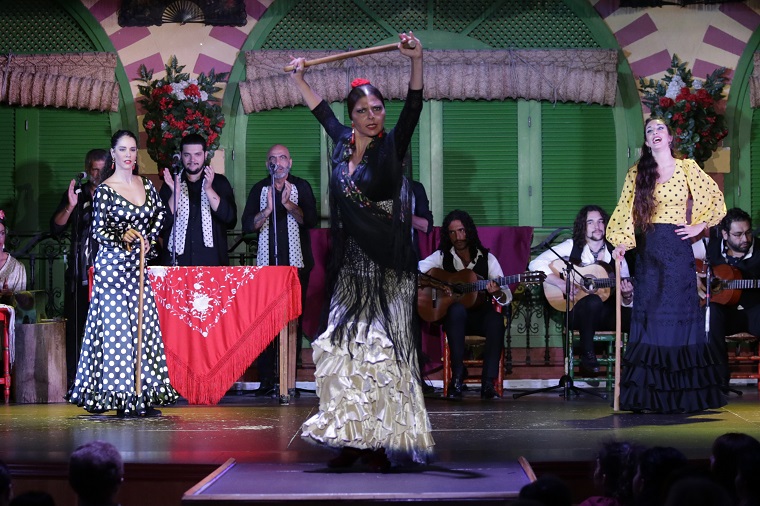
The martinete is one of the main ‘cantes’ (songs) of flamenco and is considered a form of toná. Although its origin is uncertain, most researchers place it in the forges of Jerez, Cádiz and Triana (Seville), places where the Andalusian gypsies used to work, who began to develop these songs.
Considered a modality of the toná, the martinete is interpreted without guitar, ‘a palo seco’, although sometimes it is accompanied by the sounds that are reminiscent of those of a forge, hitting some metal.
In fact, the name of this song refers to the hammer with which the blacksmiths or the twin bellows used in the forges that are called hammers worked.
It is a song with a couplet, of four verses of eight syllables. His lyrics are characterized by having a sad content and a monochrome tone. It begins with an om ‘tran-tran’onomatopoeic, which recalls the sound of the hammer on the anvil, and ends with long ‘quejío’.
The martinete, together with the soleá, seguiriya or tonás, are considered “cantes grandes” of flamenco and styles that support the tree of this artistic genre.

As we have already indicated, the martinete derives from the tonás that the gypsies sang in the forges, while they waited for the iron to heat up in the fire, but especially after finishing the work in the leisure time that they spent in the taverns.
It was from the Concurso de Cante Jondo, which was held in Granada in 1922, when this flamenco style was put in value. In this event the martinete was included along with the jailers as cantes to interpret and, from there, this style became part of the repertoire of professional singers.
After this, Manuel Centeno introduced him to the bolt, hence the bolt for hammers. For his part, José Blas Vega, in the presentation of the Magna Anthology of Flamenco, groups the martinete in three schools: Jerez, the Puerto de Santa María and Triana. It is in this Sevillian neighborhood, where the best tradition and specialization of these songs took place, thanks to the gypsies of Caganchos, Pelaos and Puyas, whose direct heir was Pepe el Culata.
As with other styles of this artistic genre, the martinete has evolved throughout its history. Currently, two main types of hammers are distinguished:
Natural: with a background in the Extremaduran round songs and related in its melody with some seguiriyas.
Redoblao.
The difference between them is that in the redoblao some of the thirds are repeated, something that is not done in the natural one. Here is an example of each type of martinete:
Natural
Nadie diga que es locura
Lo que estoy aparentando
Que la locura se cura
Y yo vivo agonizando.
Redoblao
Nadie diga que es locura
nadie diga que es locura
esto que estabaíto yo aparentando
que la locura
que la locura se cura
y yo vivo agonizando.
The martinete is a ‘cante valiente’ and therefore requires great powers for the singer to interpret it properly. The indicated is a deep, broken and long voice of complaining to be able to print that dramatic load that this flamenco style possesses.
It is a hard song with a lot of difficulty when interpreting it, both to be able to with all thirds, as well as to add the dramatic force expressed by his lyrics. Hence, the artist must have the ability to convey the pain, grief or nostalgia that the letter of the martinete sings.
In the following video, we can enjoy Enrique Morente performing this song:
The martinete is not always present in a flamenco repertoire, but it is a song that is worth enjoying live. In the flamenco show that is held daily at El Palacio Andaluz, this flamenco style is included in the tour that the show takes for the most significant styles of traditional flamenco.
Therefore, we invite you to enjoy the martinete in our flamenco tablao in Seville, a unique opportunity to feel this art in the first person. You can make your booking online and thus choose the day and time you prefer. See you at El Palacio Andaluz!
© 2025 El Palacio Andaluz. All rights reserved.